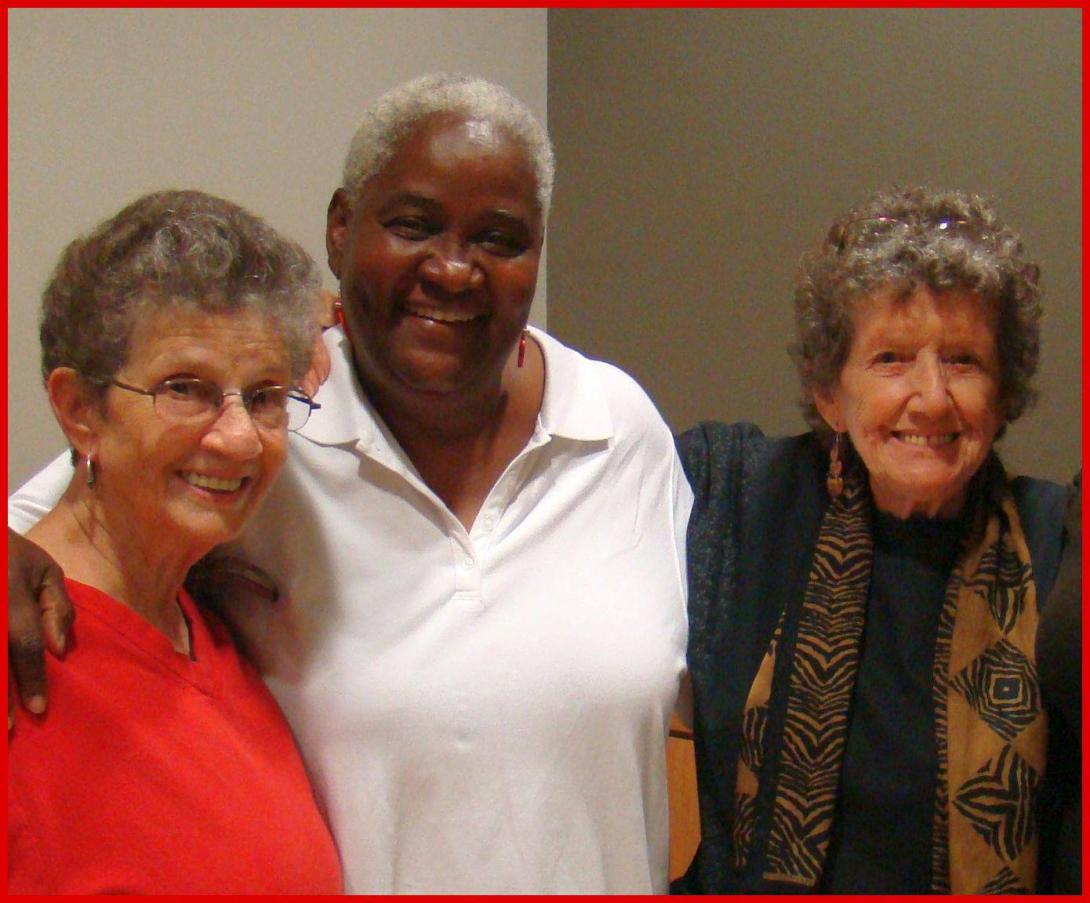
Lessons from the Wilderness of Solidarity
Connie Canney was a white woman who I believe epitomized what real solidarity is, long before people even called it that. Solidarity is how you live your life in support of human beings – even when you could lose a lot taking the right stance. It is how you treat and care for other people wherever you meet them. Solidarity is being radically present in the fight for social justice. Connie practiced radical love with her movement work. A spectacular justice warrior for more than 60 years, died August 20 at the age of 93. When people like Connie leave the planet, you struggle because a dry obituary just won’t do. Her life and work was so important that I have been struggling with how to justly tell her story and to honor her unique work, enthusiasm and radical love.
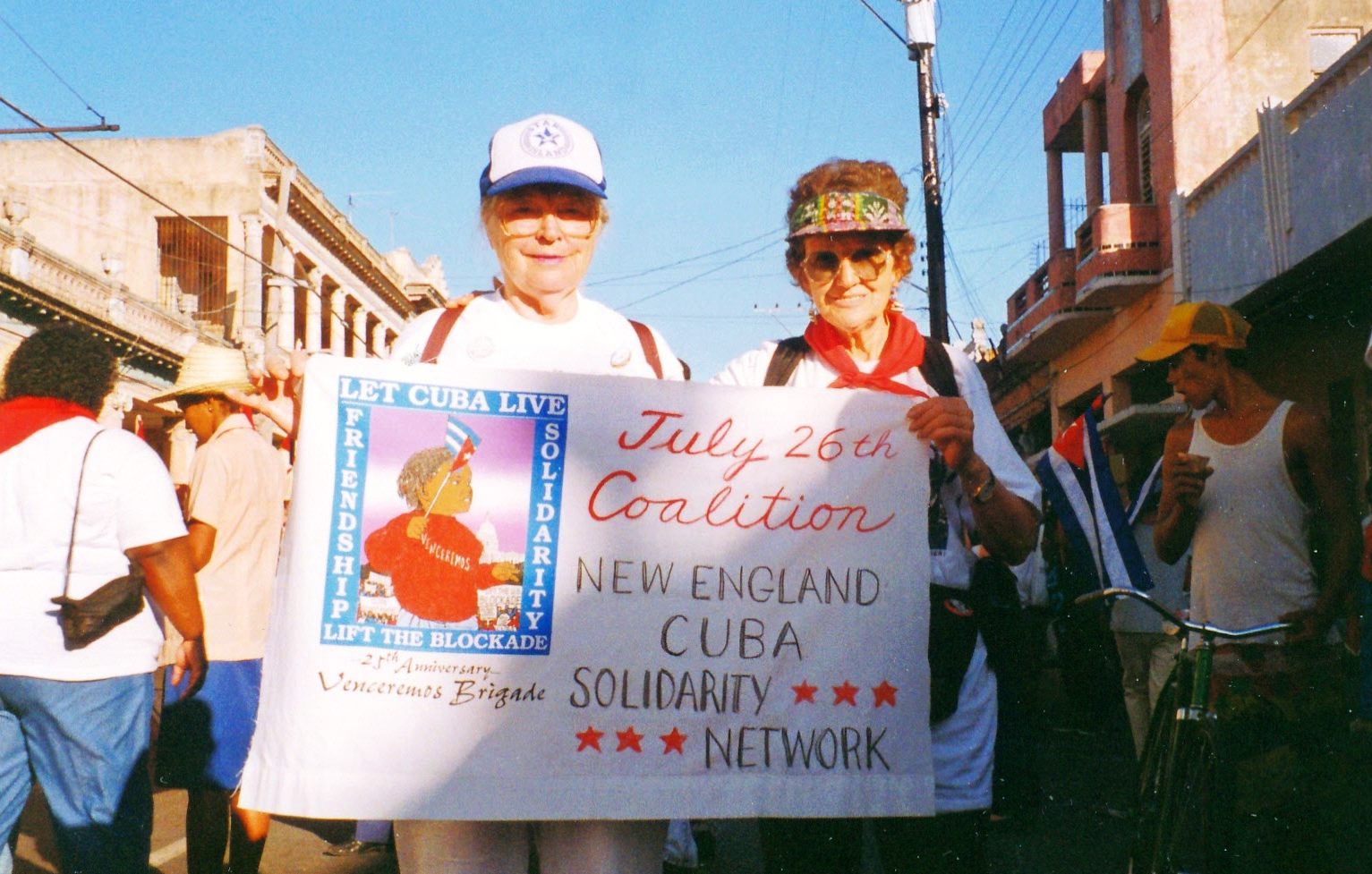
I think one of her most valuable contributions to the human family and the movement for social justice is her struggles to fight white supremacy. She was on picket lines, protesting the negatives, but more importantly, she was the type of person who was encouraging and supportive in so many ways. She was one of those rare white people who a black person knows instantly that you can trust. That you feel safe with, and can let your guard down. She has supported people of all walks of life, leading one supporter on Facebook to characterize as a “warrior queen.” She organized from Florida to Maine and internationally as well.
Connie never left her hometown for her first 18 years and had never seen a black person
Connie was born in Lyman, ME close to the Canadian border in a small mill town. She grew up in East Rochester, NH where “everyone was poor.” She had never seen a person of color. She also hadn’t seen, or another city or state, like many in the city. Everyone was a big family, she said. She attended the Kansas City Art Institute & School of Design, in Missouri. She graduated in 1951.
A year later, she returned to New Hampshire and married Robert Canney of Lebanon, ME, who had served in the Merchant Marines and the U.S. Army. The couple had two sons, Michael and Brett, and a daughter Taryn born between 1952-1955.
In 1959, they moved to Gainesville in central Florida so that Bob could attend the University of Florida to pursue a master’s degree. They lived in student housing, and for four years Connie worked in the office of Student Publications the school’s newspaper was produced. The couple became involved in the Civil Rights Movement, and in 1963 Bob was arrested at a “sit-in” at a segregated lunch counter in Ocala, a nearby city.
She learned about racism in Central Florida - “We were educated in the streets.”
It was in Gainesville, a still pretty much rural Southern town in Alachua where Connie and Bob got “educated about racism and Southern politics. “We learned a lot of things we never learned before,” she said in an interview in 2019. ”Even though my husband went to the university to get his education, we pretty much got educated in the streets. That’s where we really learned what we needed to know about how to live in the community as people who could understand and respect one another. And it was a very difficult transition.”
In 1964, the couple moved to Cocoa, FL when Bob got a job teaching English Literature at Brevard Junior College. Connie taught art classes at the Central Brevard Art Association. Connie’s artwork was being shown in local galleries, but they had to cut short their stay in Cocoa when Bob was fired for organizing the first teacher’s union and supported a statewide teacher’s strike. Connie and Bob went to jail for protesting the lack of academic freedom. They moved their family back to Gainesville where Bob taught classes worked on his doctorate in education at the University of Florida. They both were active in the civil rights and anti-racist movements and were outspoken critics of the U.S. war on Vietnam.
“We would be under surveillance because we were having people of color in our home,” she said. “A lot of things going on in Gainesville and that's where we got our education. I've always been thankful for that. I don't care what happened to us. We got through it. You kind of kickstarted the consciousness that we had to have in order to be there, you know?”
In 1970, Bob helped to organize the first statewide anti-war protests in St. Petersburg where the Junta of Militant Organizations was organizing against racism. Bob spoke at the rally and encouraged the rally participants to focus on racism and poverty: “Let’s bring the goddam war home and deal with the problems that confront us here,” were Bob’s famous words.
She organized a campaign to free her husband who was imprisoned purportedly for cursing
Using Bob’s profanity as an excuse, the police, who had been standing around in riot-gear, attacked the crowd. Bob was arrested for profanity. The charge was later dropped, but he was convicted of felony resisting arrest. He was sentence to two years in prison and fired from his teaching job at the University of Florida. Connie helped organize a nationwide “Free Bob Canney” movement.
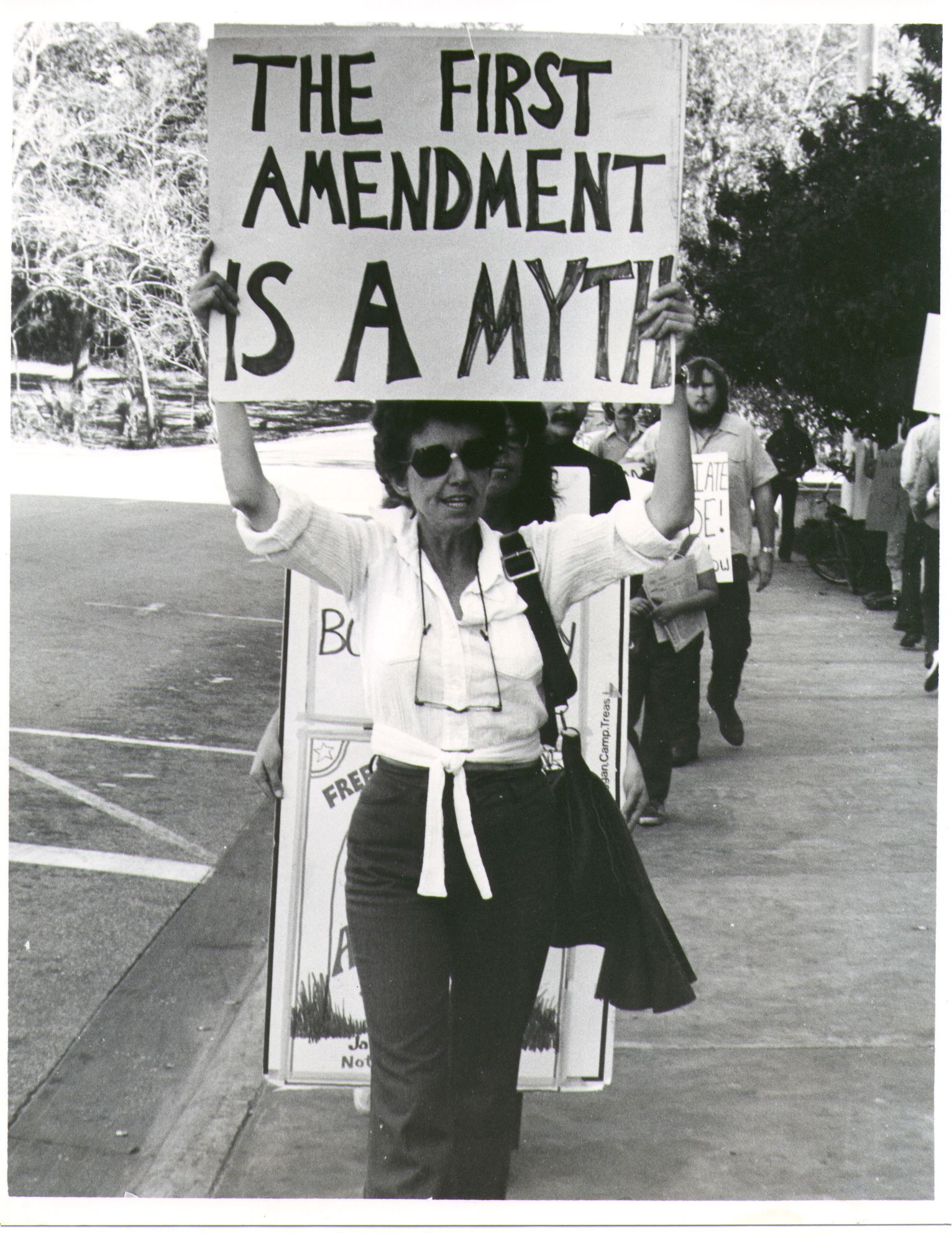
It was a couple of years after the police provocation and in the midst of the Free Bob Canney movement that my life intersected with the Canneys. I was 18 when I started attending the University of Florida. I was in the class of 1972, a handful of black students who were offered scholarships to attend college. Racism was so ingrained at the school that the Federal government had to threatened to take away federal funds to forced integration in 1971. The students and faculty at this near “Ivy-League” school and the town residents deeply resented our presence. I remember getting called the N-word every day on the streets of Gainesville, often yelled out of passing cars. In the classroom, it wasn’t much better. Teachers would make ignorant and racist statements like black people enjoyed slavery and I was always challenging these statements.
Because of the overt racism and hostility on campus and the community, I joined the African People’s Socialist Party (APSP), which was created when JOMO merged with two other organizations in St. Petersburg. The APSP had a chapter in Gainesville, and we often made the two-hour drive to party headquarters in St. Petersburg.
I often heard the Chairman tell the story of Bob Canney’s arrest. It was commonplace for Black people to be beat up by the police, but it was another thing for a white man to get the same treatment. We knew that it was because Bob and Connie were in solidarity with the black movement. They were some the first white people who fiercely struggled against racism and racist attacks against black people, in the 1960s when most others were still on the fence. When the APSP organized a group to advocate in the white community, Bob and Connie were among its first and ardent members.
Bob and Connie had moved back to Maine after he was released from after a few months. They owned an antique shop called “Someplace Else” in Alfred, ME. But their presence was large in the Florida black movement. The Canneys supported the movement in many ways, including financially. I was often the person calling them. The Maine chapter of the African People’s Solidarity Committee (APSC) had 10 people. The couple was active in various social justice causes, traveling to Nicaragua and Cuba in the 1980s. Connie and Bob were active in the National Committee to Defend Dessie Woods, a black woman who was imprisoned in Georgia for killing a white man who tried to rape her with his own gun. Connie designed the “Free Dessie Woods” poster that sparked an international movement to free her.
When the mostly female Central Committee of the APSP expelled the chairman, Omali Yeshitela (aka Joseph Waller), for physical attacks on, and being oppressive to women, the Canneys supported us. Unlike the APSC, they made independent judgements of Yeshitela’s hypocritical attacks which included lies that we were agents of the FBI, which could have endangered our lives.
Bob died in 1988, but his death didn’t stop Connie from continuing her work in the movement. She traveled to Mexico, Guatemala, Cuba, Honduras and Venezuela expressing her solidarity with people and countries struggling against U.S. imperialism. Connie was also a subscriber of Grassroots Economic Organizing when it was a hard copy newspaper. She was dedicated to grassroots organizing, who thought of herself as “radical.”
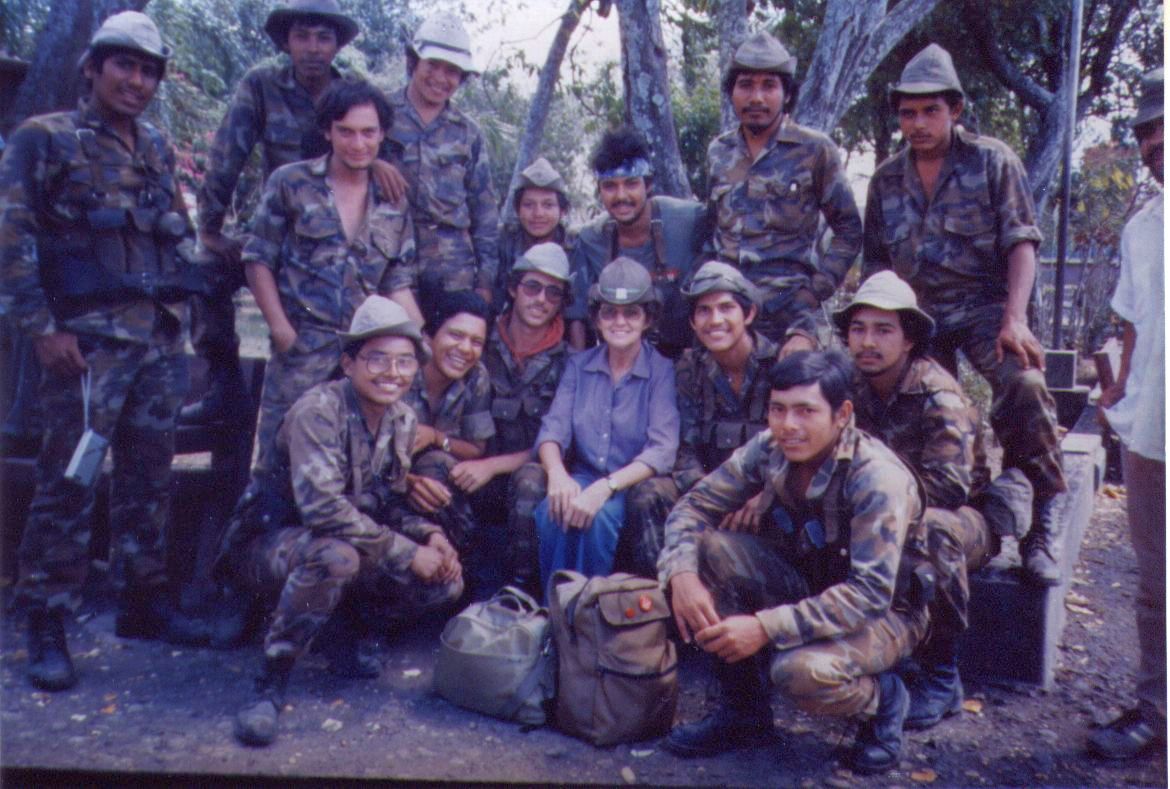
The Movement was a “Force” in Her Life
“I've always thought of the movement as being a force in my life that without it, I don't know what I would have done because it gave purpose and power to our lives in a personal as well as political way,” she recalled in 2019. “It couldn't be damaged or destroyed because it was a force. It was life. I mean, it became your life, if you're in the movement.”
Connie always stayed in touch with me, mainly through Facebook. She posted information about U.S. black movement and international causes. Whenever I posted anything, she was always there with a supportive word. She especially enjoyed posts when I was a caregiver for my mother. Even though Connie was in her 80s, I was impressed that she was active in her local community. Before Covid, she volunteered at the Layman Recovery Center where she drew portraits of the residents, and donated part of her art collection to the center.
Remembering Their Valiant Solidarity Struggles 50 Years Prior
In 2019, I decided that Connie and Carol would be great people to interview for podcasts because they were some of the country’s first “anti-racist” organizers. And they have been warriors for 50 years. I felt they would have a lot to teach people, especially younger anti-racists. They chose not to continue with the APSC, but understood how the country thrived on white supremacy. I sent them questions about areas I wanted to pursue.
Connie was 85 and Carol was 89. They didn’t really get the podcast idea, but organized a lively recording session to answer my questions facilitated by a local teacher, Shay Bellamy.
One of the questions that I asked the women, two friends who had worked for decades in the movement in Gainesville, was what they thought would help deal with white supremacy in this country.
“I always think one of the first things that ought to be done to get rid of anything that is really affecting us in a very negative way,” Connie said. “I think poverty is terrorism.”
She said that it was necessary to confront economics. “If everyone had certain basic needs met... they can think about let's try to do something about these other things.”
Connie Canney was a fierce advocate for social justice even at a feisty 93. She left us many lessons, and was a special kind of role model who one who could not help but respect and be inspired by.
Archive Needed for Movement Papers
Connie, myself, Faye Williams and Linda Leaks, two other former APSP members, met several months in 2017 trying to find a home for her and Bob’s many movement documents. We envisioned a “Social Justice Archive,” or a “Struggle for Justice Memorial Library” to document the many stories of not only her and Bob’s work but the work of many other people who did work and hold stories that is not documented in history books. The struggle stalled, but if anyone has ideas of archives that might be interested in Connie’s documents or who might be interested in organizing and/or donating to the Struggle for Justice Memorial library, please contact the family at ConnieCanneyMemorial@proton.me. Electronic copies of photos, memories and tributes may also be sent to that address.
She is survived by her sister, three children, five grandchildren and seven greatgrandchildren. A memorial celebration and art exhibition will take place September 24. Instead of flowers, the family suggests donations to Caring Unlimited, York County’s Domestic Violence Resource Center Veterans for Peace, Maine Chapter or your local food pantry, or the justice library.
(Thanks to Shay Bellamy and Jason Fults for facilitating and recording the Feb. 3, 2019 interview and Connie’s son, Michael Canney, who provided photos and details of Connie’s life.)
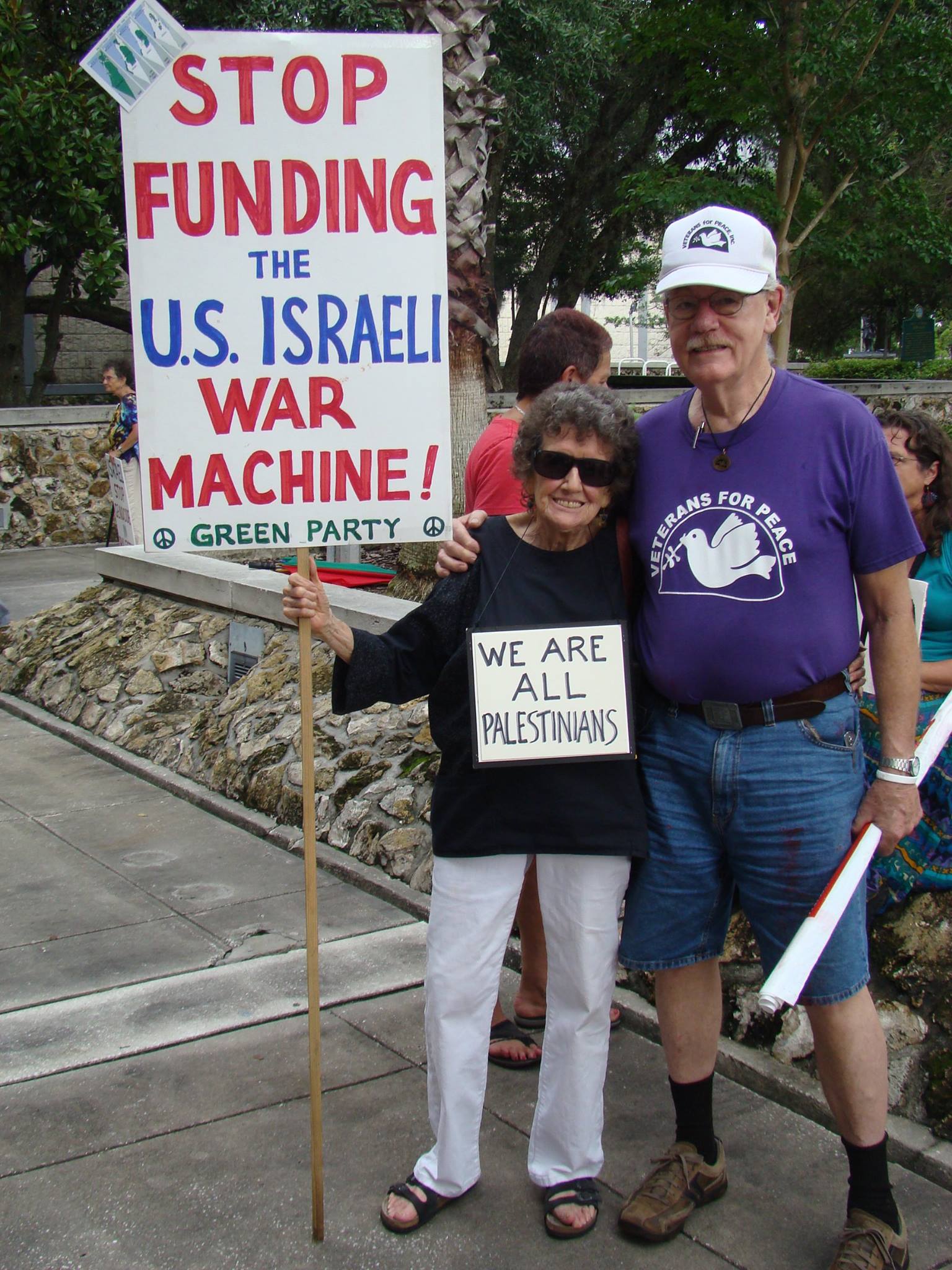
Header image: Connie with Carol Thomas and Faye Williams.
Citations
Ajowa Nzinga Ifateyo (2024). Remembering Connie Canney, a Justice Warrior: Lessons from the Wilderness of Solidarity. Grassroots Economic Organizing (GEO). https://geo.coop/articles/remembering-connie-canney-justice-warrior

Add new comment